The opal fields of Australia were formed at the bottom of a large inland sea. In this sea there were all sorts of marine creatures including turtles, crocodiles, dinosaurs, all sorts of fish and of course shellfish. As these creatures died their bodies sank to the bottom of the sea and were covered with sand and silt. Over millions of years the sea dried up and various clays and sand were deposited over the sea bed. The bodies of the sea creatures obviously rotted away and the bones and shells, being made of calcium carbonate, were dissolved by acids in the soils. This would have left cavities in the shape of the dissolved creatures. Silica then seeped through fissures and cracks and filled these cavities which acted as casts for the silica that filled them. In some cases the silica turned into opal and the reult was opal in the exact shape of the shell or bone that had been deposited on the sea bed so long ago.
The following photograhs are of opalised shells I have managed to acquire over the years. I am not an opal dealer, merely a collector for my own satisfaction so my shells may not be the best you have ever seen but they are, nevertheless, still very unique and beatiful and they are millions of years old.
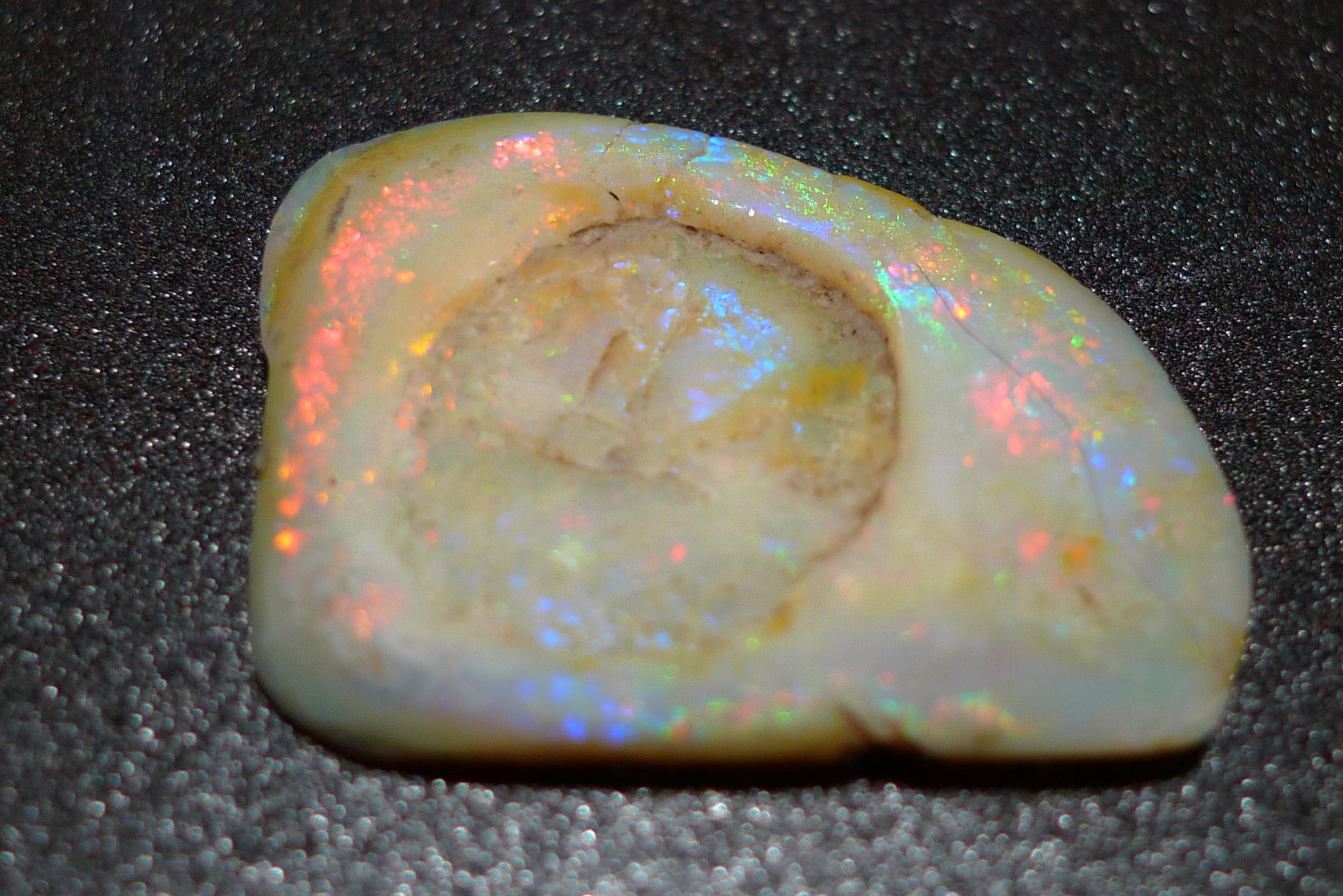
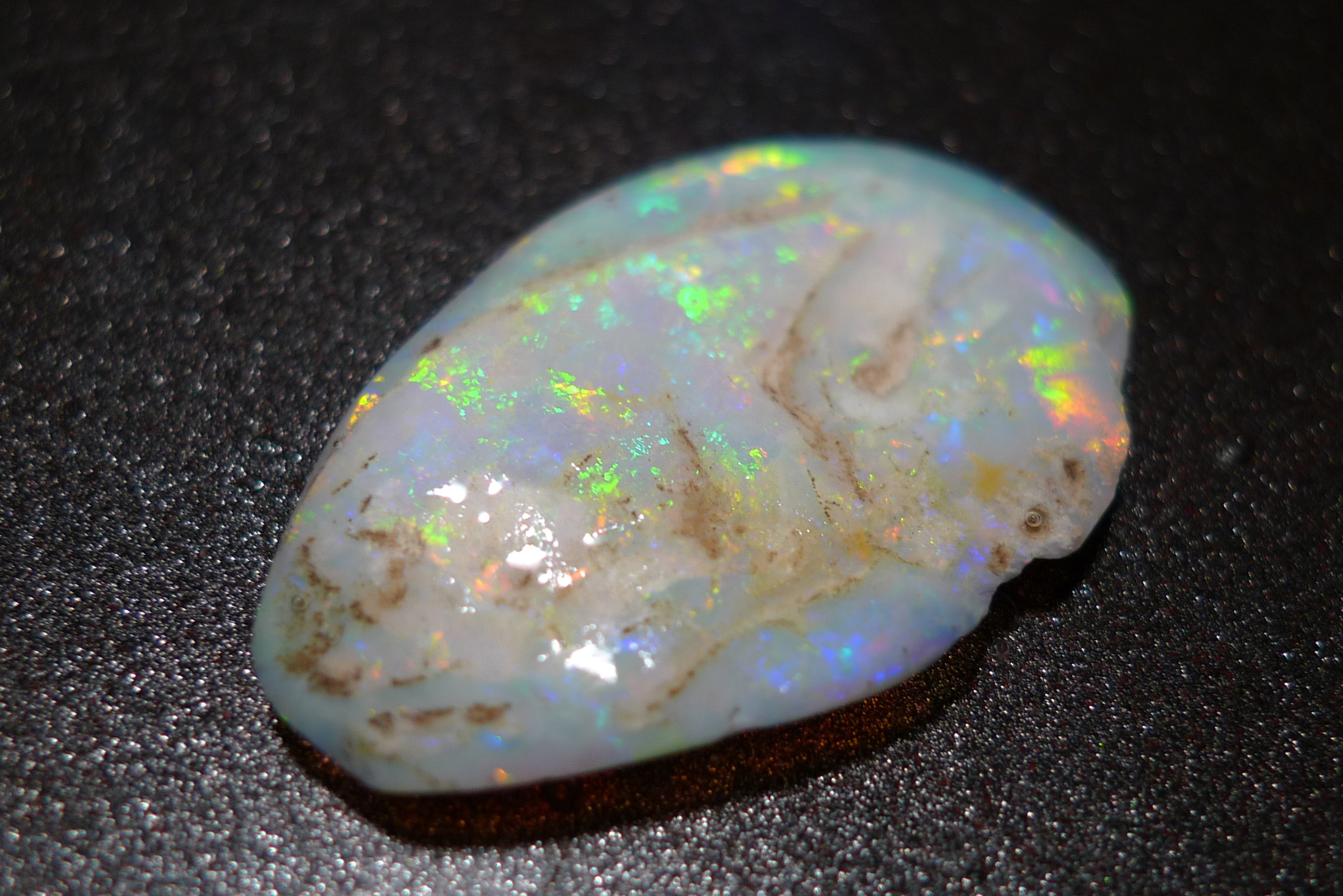
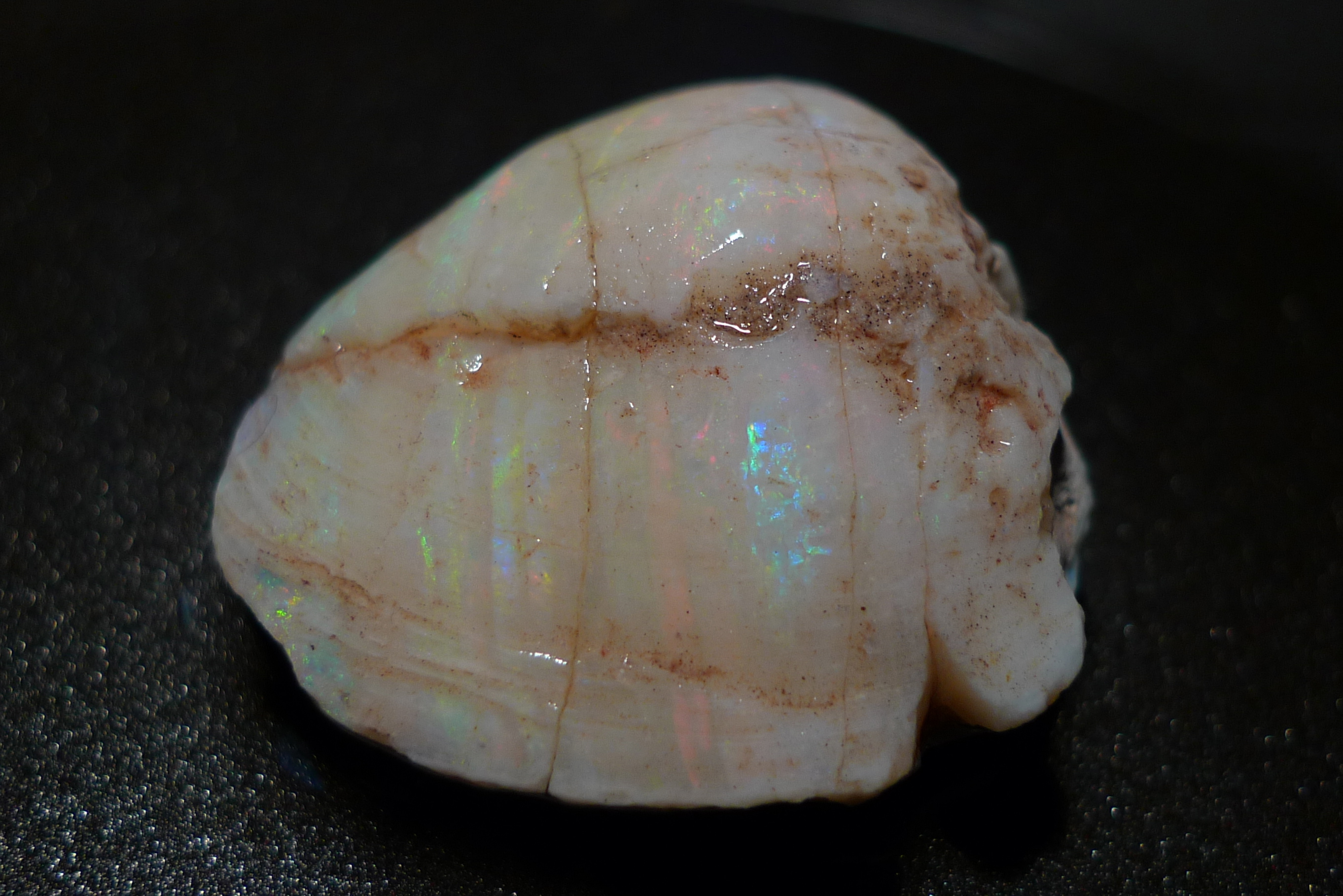
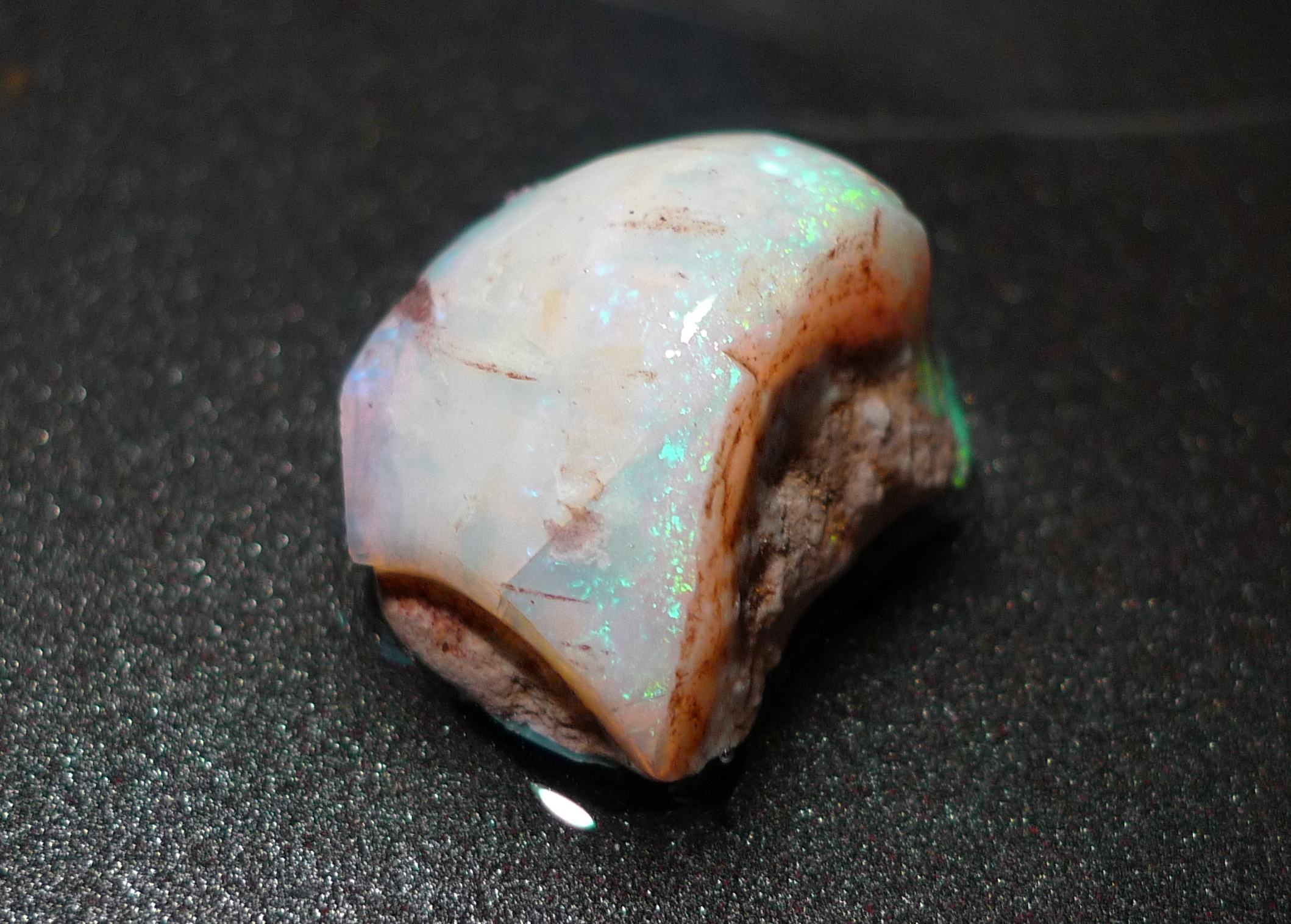
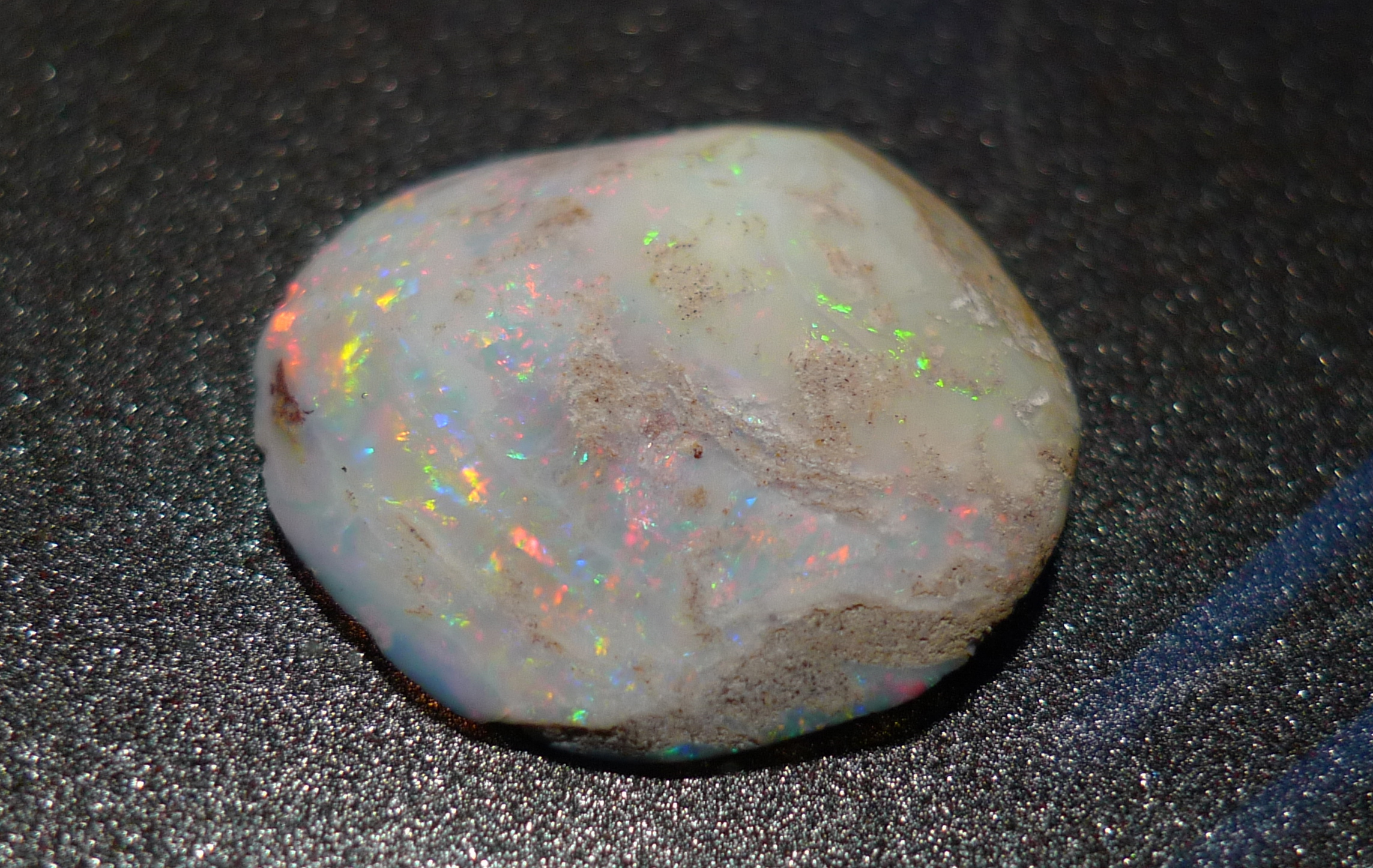
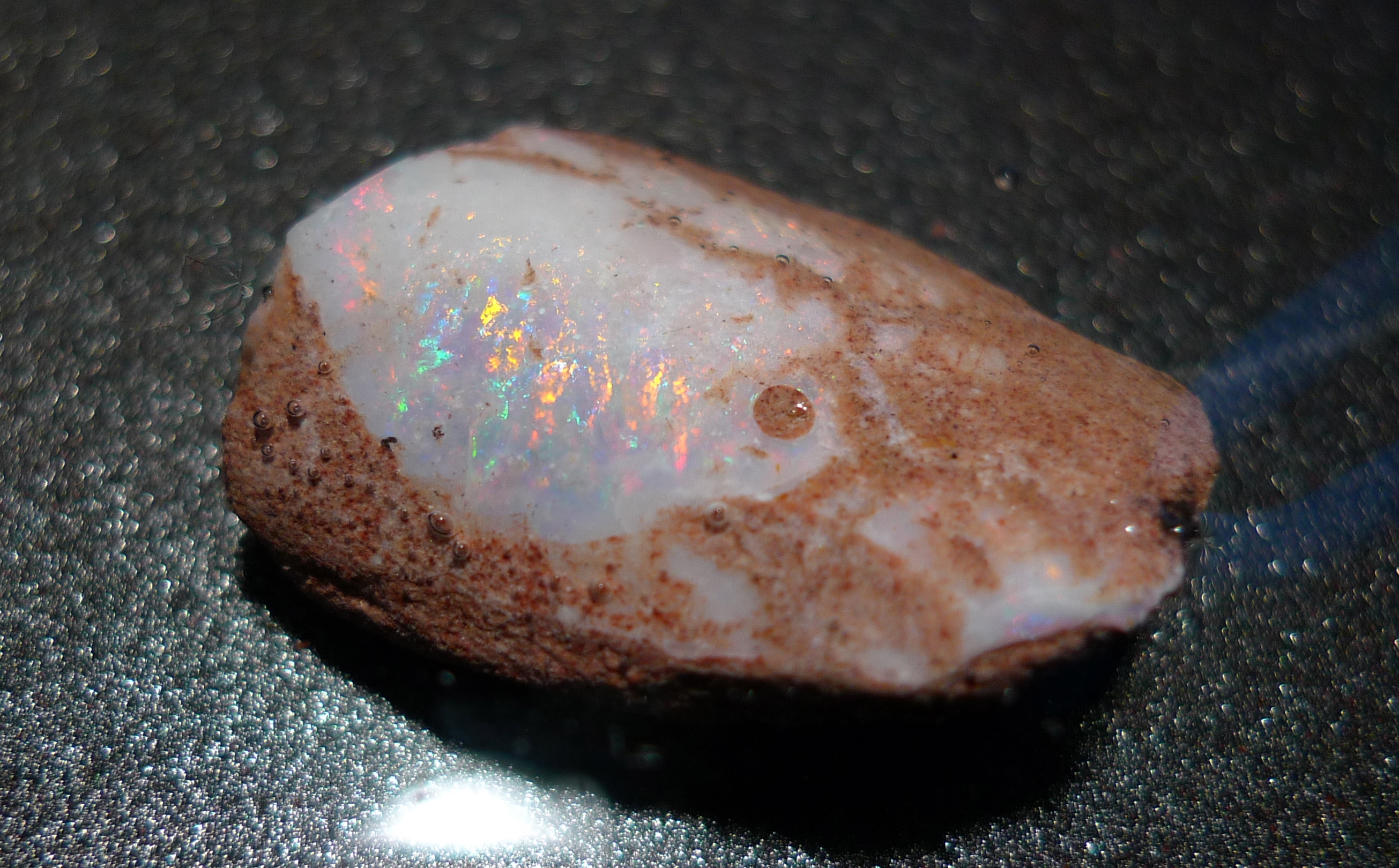
All of these shells have come from Coober Pedy.
There have been many different varieties of opalised sea and plant life found at most of the opal fields. Lightning Ridge and Coober Pedy are very famous for the wide variety of opalised fossils. There are reports of opalised dinasaur bones, sharks teeth,crocodile teeth, turtle shell, various species of shell fish and of course opalised wood and pine cones. A search of the web will reveal many sites with photographs of these wonderful fossils which are many millions of years old.
One such site is the attached.
Another site with interesting photographs is Australian Opal Shells.
Hope you enjoy.
Johno